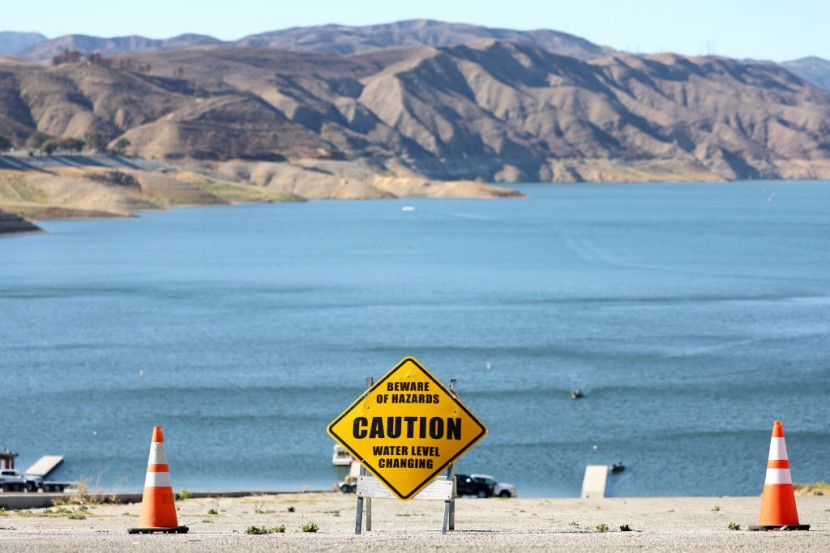
Summer produce has shriveled, and winter crops are in danger due to the drought in central California and restricted water supplies from the Colorado River in the southernmost section of the state.
As a result, US food prices have risen, placing more strain on consumers' ability to make ends meet. Food cost increases this year have contributed to the highest rate of inflation in the United States in 40 years, according to a Reuters report.
The California drought and Hurricane Ian's damage to Florida's citrus and tomato harvests might raise food prices further.
Don Cameron, president of the California State Board of Food and Agriculture, said: "There's just not enough water to grow everything that we normally grow."
In 2020, California saw the driest January and February in recorded history, exacerbating the state's current drought. The Sierra Nevada Conservancy, a governmental body, working to preserve natural resources, reports that this past April saw snowpack levels at only 38 percent of their historical normal, which is significantly below average given the importance of snow to the Central Valley's water supply.
The United States Department of Agriculture decreased its 2022 projection for processed tomatoes from 12.2 million tons to 10.5 million tons in August. California accounts for around 30 percent of the global production of processed tomatoes.
Drought, Among Other Factors Impacting US Agriculture
The intense heat and dry spell are still wreaking havoc on the western part of the US, causing farmers to cut livestock herds, rip up orchards, fallow land, and lower projected harvests.
Economists pointed out that rising temperatures and drought have made matters worse for American farmers already struggling with supply chain knock-on impacts from Russia's war with Ukraine, raising the cost of components like fertilizer, worker shortages across the country, high US food prices, inflation, and high energy costs, as reported by CNN.
According to a recent market report from the American Farm Bureau Federation, the vast majority of the nation's fruits, tree nuts, and vegetables come from places like California and Texas that are experiencing severe drought.
The Farm Bureau predicts that American consumers would likely pay more for these commodities and either partly rely on overseas suppliers or limit the variety of items they buy at the store due to the drought and its repercussions. Since California provides 80 percent of the world's supply of almonds, "drought conditions in the US also jeopardize worldwide availability of such commodities.
Over 1,200 wells have dried up this year, according to state officials, a rise of nearly 50 percent over the same period last year. This year's snowpack and rainfall have not adequately replenished groundwater levels.
NPR reported that Western U.S. and northern Mexico are facing their worst dry spell in 1,200 years, new research says. The condition is partly due to climate change caused by humans.
Australian Start-Up Suggests 'Growing' Water
An ingenious potential remedy for the California drought has now been developed by an Australian business, producing water ideal for drinking, farming, and other purposes.
In a story featured by CBS News, Terry Paule, co-founder and CEO of Botanical Water Technologies in Australia, has remarked, "We like to say that, in simple terms, we grow water."
BWT partnered with Ingomar Packing Co. Ingomar processes several bushels of tomatoes from the San Joaquin Valley into tomato paste and ketchup.
Water is a byproduct of that procedure that has commonly been wasted. Paule says water is being removed from the tomatoes to make ketchup.
"We collect the condensate that forms during evaporation," he explained, then it goes through a "refinement procedure."
Everything is done in a compact device that can be stored in a standard container.
According to BWT's Chief Commercial Officer, A.J. Priester, one facility alone can manufacture up to 250 million gallons of water within 90 days. Potable water may then be piped to towns, depleted reserves, farms, industries, and residential storage tanks.
Costs for each purifying system average $1 million. It may go to wherever harvesting is taking place, process the crops, and then relocate to another location.
By 2025, BWT aspires to offer clean and safe drinking water to 100 million of the world's most disadvantaged people, significantly reducing the water crisis.
Related Article : US Jobless Claims Jump Last Week Exceeds Expectations as Jobs Market Remain Strong
© 2025 HNGN, All rights reserved. Do not reproduce without permission.








